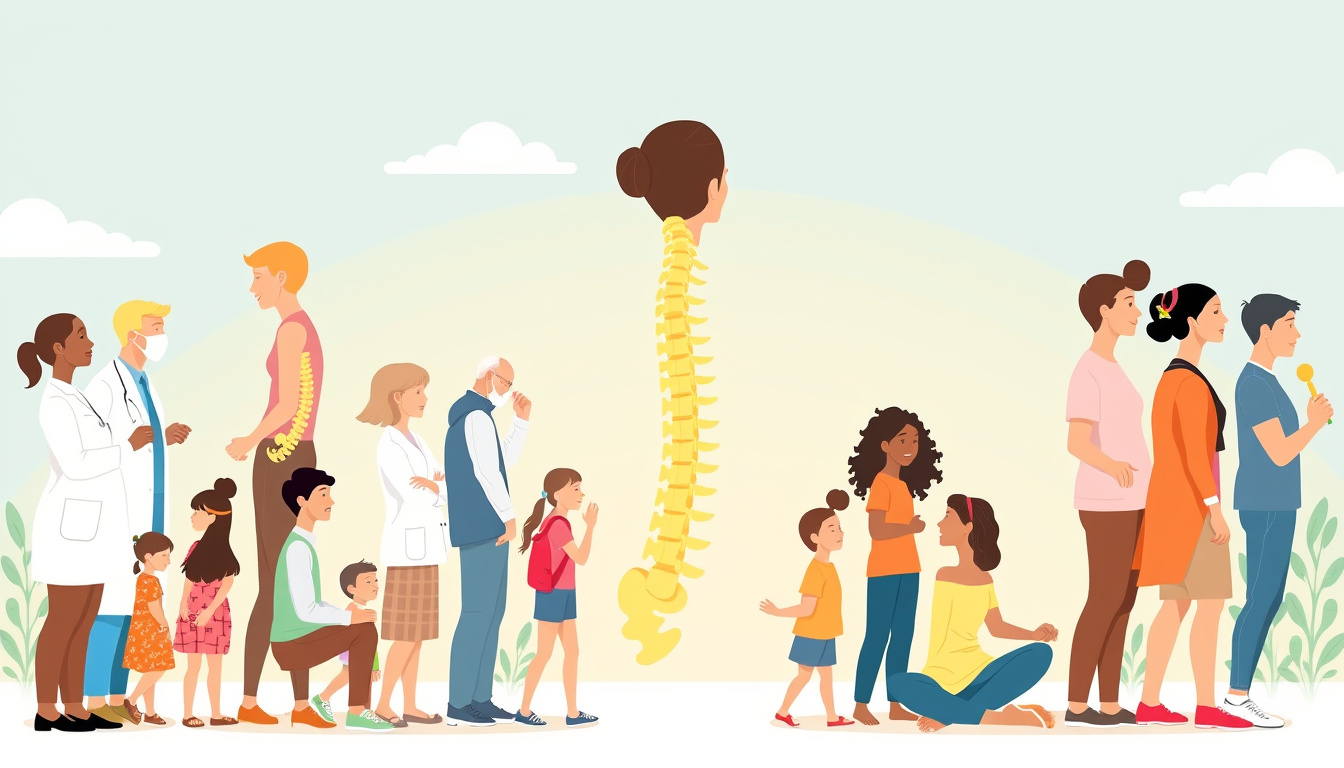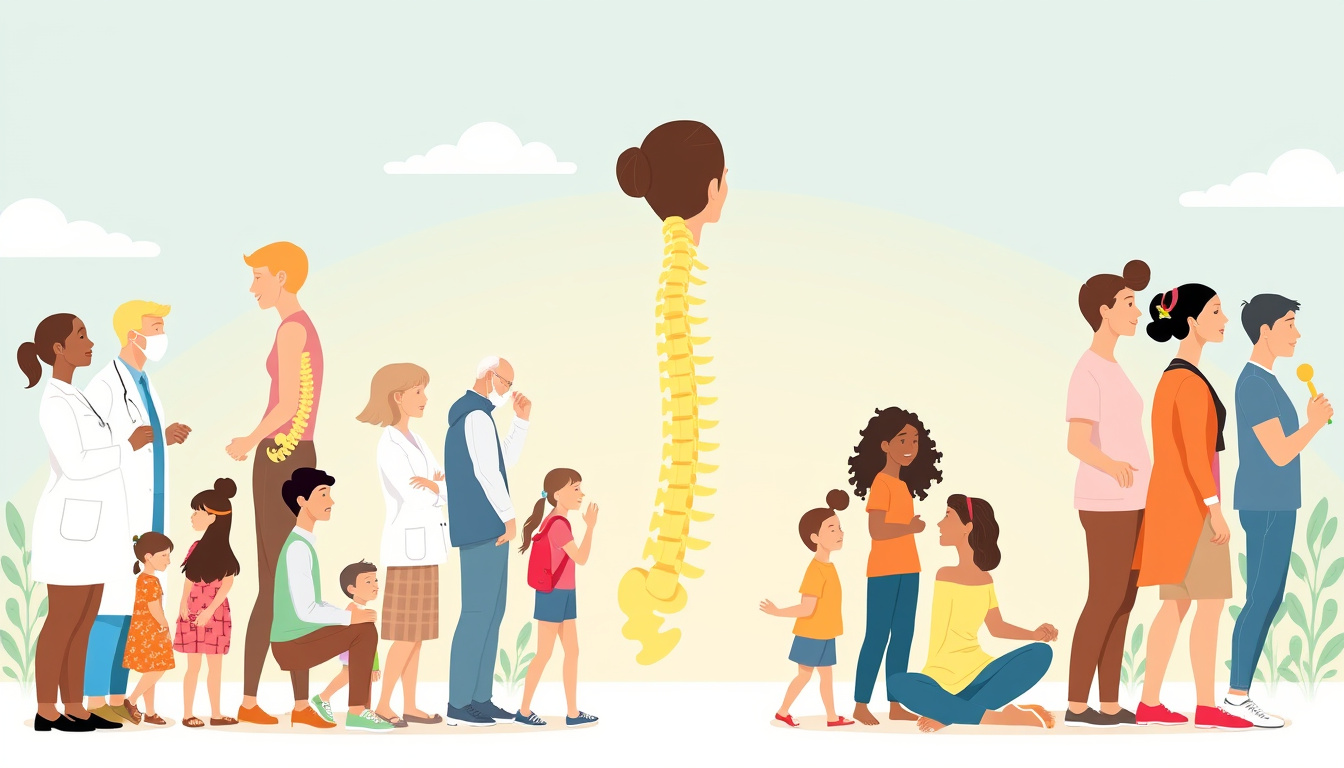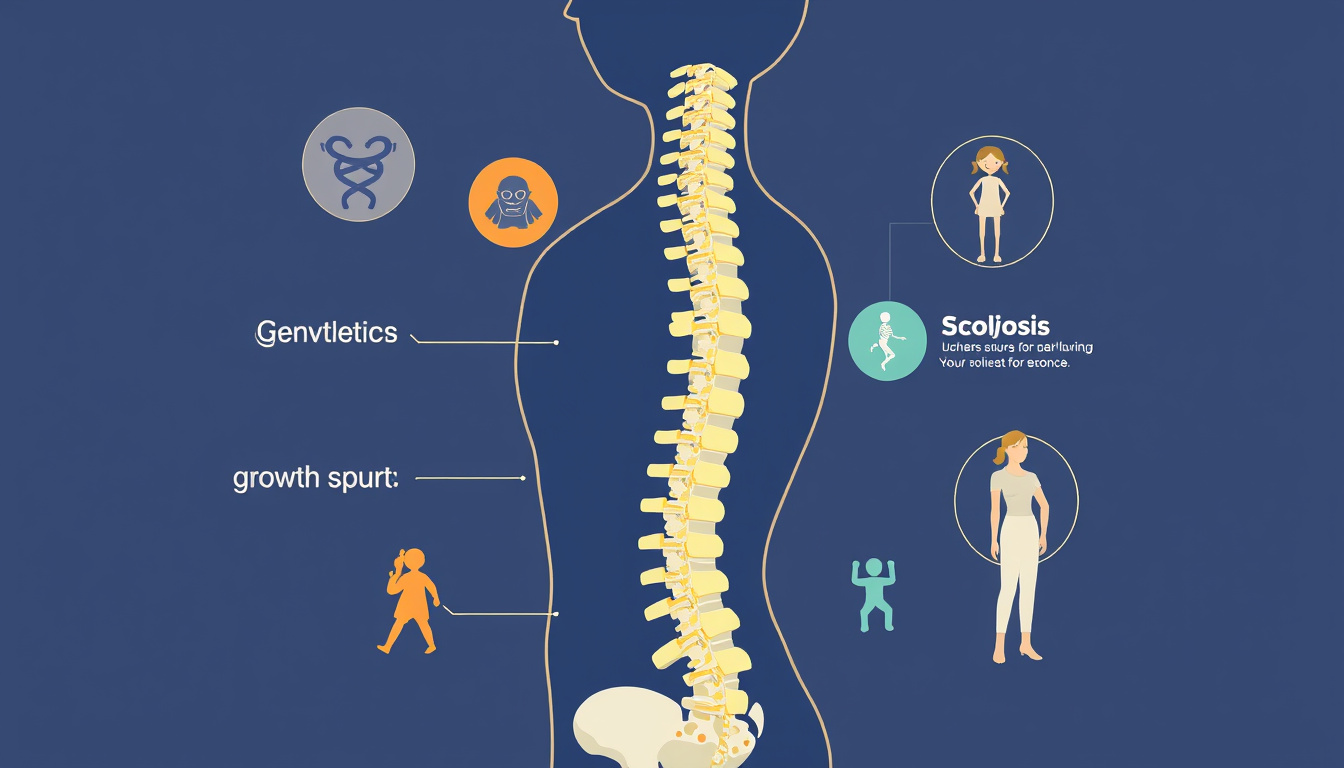
10 Apr Understanding Scoliosis: Symptoms, Treatments, and Living Well with Curved Spines
Scoliosis, a condition characterized by an abnormal curvature of the spine, affects millions of individuals worldwide. While the term may not be widely recognized, understanding scoliosis is crucial for early detection, treatment, and effective management of the condition. This article delves into scoliosis by exploring its definition, symptoms, causes, treatment options, and tips for living a fulfilling life despite having a curved spine. Whether you or a loved one has recently been diagnosed or you are simply seeking to broaden your knowledge, this guide provides the insights you need on navigating scoliosis with confidence.

Key Takeaways
- Scoliosis is characterized by an abnormal curvature of the spine that can vary in severity.
- Common symptoms of scoliosis include uneven shoulders, waist, and back pain that can affect daily life.
- Various factors can contribute to scoliosis, including genetics, age, and certain medical conditions.
- Treatment options range from observation for mild cases to braces and surgery for more severe cases.
- Living well with scoliosis involves managing symptoms, seeking support, and utilizing available resources effectively.
What is Scoliosis? A Comprehensive Overview
Scoliosis is a medical condition characterized by an abnormal curvature of the spine, often resembling an ‘S’ or ‘C’ shape when viewed from the back. It can occur in varying degrees, with some individuals experiencing a mild curve that does not require treatment, while others may possess a more severe curvature that can lead to complications. The cause of scoliosis can be classified into three categories: idiopathic, which has no known origin and is the most common form, congenital scoliosis due to spinal deformities present at birth, and neuromuscular scoliosis stemming from conditions such as cerebral palsy or muscular dystrophy. Understanding scoliosis is essential, as early diagnosis can significantly affect treatment options and outcomes. Common signs of scoliosis include uneven shoulders, a noticeable rib hump, and one hip appearing higher than the other. Diagnosis typically involves physical examinations, followed by imaging tests such as X-rays to assess the curvature degree. While treatment may vary from observation for mild cases to braces or even surgical intervention for more severe situations, advancements in medical technology continue to improve the quality of care for those living with scoliosis.
Common Symptoms of Scoliosis
Scoliosis is a condition characterized by an abnormal lateral curvature of the spine, and it often emerges during the growth spurts of adolescence. Recognizing the common symptoms of scoliosis is crucial for early detection and effective management. Individuals with scoliosis may experience uneven shoulders, where one shoulder appears higher than the other. Additionally, a noticeable curve in the spine might lead to ribs protruding on one side when bending forward, often termed a rib hump. Other symptoms can include back pain, fatigue after prolonged periods of sitting or standing, and discomfort in the lower back. If left untreated, scoliosis can lead to more severe complications, including respiratory issues and chronic pain. Therefore, understanding these common symptoms is the first step for individuals and parents alike in seeking medical advice and intervention if scoliosis is suspected.
‘The greatest glory in living lies not in never falling, but in rising every time we fall.’ – Nelson Mandela

Causes and Risk Factors Associated with Scoliosis
Scoliosis is a complex condition characterized by an abnormal curvature of the spine, often resembling the letter ‘S’ or ‘C’ when viewed from the side. Understanding the causes and risk factors associated with scoliosis is essential for early diagnosis and effective treatment. While the exact origins of idiopathic scoliosis remain unclear, it typically manifests during adolescence, making genetic factors a crucial consideration. Family history plays a significant role in increasing the likelihood of developing scoliosis, as certain genes may predispose individuals to spinal deformities. Additionally, neuromuscular disorders such as cerebral palsy and muscular dystrophy can lead to secondary forms of scoliosis due to muscle imbalance. Age is another critical risk factor; while scoliosis can affect individuals at any stage of life, it is most commonly diagnosed during periods of rapid growth, particularly between the ages of 10 and
15. Furthermore, sex also influences risk, with girls being more likely than boys to develop clinically significant scoliosis. By recognizing these causes and risk factors, patients and healthcare providers can work together to monitor and manage scoliosis effectively.
Treatment Options for Scoliosis: From Observation to Surgery
Scoliosis, characterized by an abnormal lateral curvature of the spine, affects millions worldwide and varies significantly in severity and impact on daily life. Treatment options for scoliosis depend on the degree of curvature, the age of the patient, and whether the person is still growing. For mild cases, observation may be all that’s necessary, with regular check-ups to monitor any changes in curvature. If scoliosis progresses and becomes moderate, bracing may be recommended, especially in adolescents, to prevent further curvature during critical growth periods. In more severe cases, particularly those impacting overall health and quality of life, surgical intervention can be considered. Surgical options can include spinal fusion or other advanced techniques that stabilize the spine and correct the curvature. Each treatment option must be personalized, taking into account the individual’s specific circumstances, making early diagnosis and personalized care essential in managing scoliosis effectively.

Living with Scoliosis: Tips for Managing Daily Life
Living with scoliosis can present unique challenges in daily life, but there are effective strategies that can help individuals manage their condition while maintaining a fulfilling lifestyle. First and foremost, it’s essential to work closely with healthcare providers to establish a tailored treatment plan, which may include physical therapy, exercises aimed at strengthening the back, and regular check-ups to monitor spinal curvature. In addition, ergonomic adjustments in your workspace and home can significantly impact comfort levels; utilizing chairs with proper lumbar support and ensuring your computer screen is at eye level can help reduce strain on your back. Furthermore, integrating low-impact activities such as swimming or yoga into your routine can improve flexibility and promote a healthier posture. Lastly, surrounding yourself with a support system, whether it’s friends, family, or scoliosis support groups, can provide emotional encouragement and valuable insights from those who understand your journey. By embracing these tips, anyone living with scoliosis can better manage daily life and focus on enhancing their overall well-being.
The Importance of Support and Resources for Scoliosis Patients
Scoliosis, a condition characterized by an abnormal curvature of the spine, can deeply affect a patient’s quality of life, not just physically but emotionally as well. The importance of support and resources for scoliosis patients cannot be underestimated. Comprehensive care involves physical support from healthcare professionals, access to specialized treatment options, and psychological resources to help navigate the complexities of living with scoliosis. Support groups and educational materials play a crucial role in providing patients with much-needed information about the condition, treatment alternatives, and coping mechanisms. Engaging with a community of others who share similar experiences can foster a sense of belonging and reduce feelings of isolation, making it easier for patients to adapt to their diagnosis. Thus, it is imperative that both healthcare providers and society at large enhance available resources to empower scoliosis patients in their journey towards well-being.

Sorry, the comment form is closed at this time.